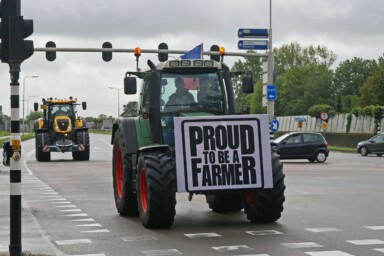Earlier this year, the UN’s State of Food Security and Nutrition report led with a depressing summary: “the world is moving backwards in efforts to eliminate hunger and malnutrition”. Its findings make for grim reading. Close to one third of the world’s population is food insecure, and after falling for decades, the number of people affected by hunger has risen to well over 800 million people, nearly 10% of the global population.
With the situation set to get even worse over the coming months due to the war in Ukraine, and the threat of climate change growing ever greater, the question of how we ensure food security for all, could not be more pressing. To date, most efforts have focused on increasing food production and fortifying and supplementing foods with key nutrients. But while this has improved food security for millions, it has also come with some major costs – perhaps the most notable being the environmental damage caused by intensive agriculture.
A more fundamental issue is that having a plentiful supply of food is only one part of the solution to hunger and malnutrition. Recognition of this fact has given rise to a third approach to improving food security, based around ensuring the right to food. It has also driven an evolution in the definition of food security itself, from its original focus on availability, to a broader understanding that emphasises the importance of factors like access, resilience, nutrition and culture. More recently, two new dimensions to food security have been added: sustainability, and ‘agency’ – in short, the ability of individuals and communities to influence decisions around the production, processing and distribution of the food they eat.
Food security and land rights
This growing focus on the importance of rights and agency to food security is especially relevant when it comes to the question of who has a stake in the ownership and management of land. In the developing world, there is good evidence to show that the extent to which people have secure land rights has a major bearing on food security. In part, this is because having access to land represents a hugely valuable means of producing food and income, but it’s also because it gives individuals and communities greater control over their food supply. A good example of this, in a negative sense, can be seen with the impact of foreign land acquisitions in Asia and sub-Saharan Africa. Despite an increase in yields there, food security has suffered – both as a result of farmers losing their land, and the decision by the new corporate owners to grow energy-rich but nutrient-poor crops for export.
There are plenty of positive examples, too. For instance, policies which improve land access for women in the developing world generally deliver major improvements for food security. This is because the larger influence in decision-making this gives them, combined with their greater concern for the wellbeing of their households compared with men, tends to result in a wider diversity of crops being grown and better nutrition. One study in Peru, for example, found that where women owned land, households had a 20% greater chance of being food secure.
The situation in the UK
There is the temptation to think that improving land access to enhance food security is not a concern in a country like the UK, where land reform remains a niche topic of discussion (apart from in Scotland) and where food security is often taken for granted. There are, however, some huge issues around land rights in the UK, as well as broader concerns around who gets a say in how it’s managed. Perhaps the most contentious of these, is our highly concentrated pattern of land ownership and, by extension, decision-making power. This has contributed to a social and economic malaise across many rural areas, with the problem being likened to that of corporate monopolies. The ongoing loss of farm tenancies, as well as concerns around a lack of security of tenure, are also a serious problem for social and environmental reasons, while the lack of governance around buying, selling and managing land means there is no real way of ensuring it is managed in the public interest. Food security is a much greater concern in the UK than some might realise, too. Some 8% of UK households are food insecure, a figure that is much higher in many areas. And while the availability of food might not be an issue at a national level today, the UK’s self-sufficiency has declined considerably over recent decades, something which should be of serious concern given the dire warnings around the impacts of climate change on many of the world’s major food exporting regions. At the same time, thousands of hectares of productive agricultural land have been developed for housing, and millions more have been degraded through unsustainable farming practices.
It’s clear, then, that land reform and food security are more important issues than their lack of media coverage would suggest, but the extent to which the former might impact the latter doesn’t appear to have had much attention, with most of the discourse around land rights focussing on other social and economic outcomes. There are, though, some good reasons to think that increasing the number of people who participate in the decision-making process around how land is used, could provide benefits for food security in the UK.
How land access could improve food security
For instance, the nascent implementation of land use frameworks and partnerships should allow for a much greater diversity of voices to have a genuine say in how land is managed. One of the likely pluses of having this more participatory approach to decision-making is a greater emphasis on delivering public benefits – which could benefit food security directly (for example, through more protection against the development of prime agricultural land) and indirectly, through the benefits of a healthy environment to the food system.
Measures which allow communities to have a greater control over land, such as Scotland’s landmark ‘Community Right to Buy’ legislation, could also have a positive impact by tackling poverty – a key determinant of food security. There is strong evidence from Scotland that a move to community ownership has tended to boost economic development, so it is at least plausible that greater community participation in land use decisions could help improve food security in this way.
Another problem facing many rural communities in particular, is the physical difficulty some face in accessing good, affordable food, due to a lack of shops and transport infrastructure. Enabling communities to have a greater say in the management of land could help with this, by promoting more diverse local food systems. There are, for instance, lots of examples of community gardens and CSA schemes which have been able to provide nutritious food for locals at affordable prices, a service that became particularly important over the pandemic. Creating a greater diversity of supply chains through more community access to land, could also benefit food security at a macro level by reducing our reliance on supermarkets and therefore improving our resilience.
How to realise these potential benefits is the key question. Existing approaches to widening land access, including initiatives like the Land Matching Service which aims to help new entrants into farming, previous pieces of land reform legislation (of which Scotland’s ‘Community Right to Buy’ is the most significant) and past reforms of farm tenancies have had some success, but are widely viewed as going nowhere near far enough. The introduction of land use partnerships and frameworks, an end to the selling off of council farms, and greater government support for local food systems could all make major differences in this regard, but there is still likely to be a need for legislation that directly addresses the concentration of land ownership. In recognition of this, the Scottish Land Commission, set up by the Scottish Government to foster a more equitable and responsible use of land, recently produced a number of legislative proposals. These include recommendations for management plans on large holdings, to ensure that local communities are more involved in land use decisions, and perhaps most significantly, a public interest test for purchases of big estates.
A more radical proposal, put forward by some, is the use of a land value tax based on the unimproved site value of land. There are good reasons why many people support this: 60% of the UK’s net wealth is in the land, but our current tax system does a terrible job of realising this potential, and theoretically at least, a land value tax represents an efficient and progressive way of doing so. However, there are some practical issues with land value taxes and in countries where they have been at least partly implemented, there is relatively little evidence to suggest that they result in any redistribution of land. For these reasons, the Scottish Land Commission recently decided not to recommend a single land value tax but did emphasise the importance of tax reform, including a more progressive use of exemptions and reliefs to encourage more community ownership and agricultural letting.
Improving the ability of communities to influence and benefit from land use decisions won’t be enough on its own to foster greater levels of food security. Neither is land reform a silver bullet – the case of Japan, where post-war land reform led to social benefits but not environmental sustainability, is illustrative in this regard. Nevertheless, improving land rights is a key consideration for sustainable development, and one that should be factored into thinking around food security – not just in the developing world, but in the UK too.







